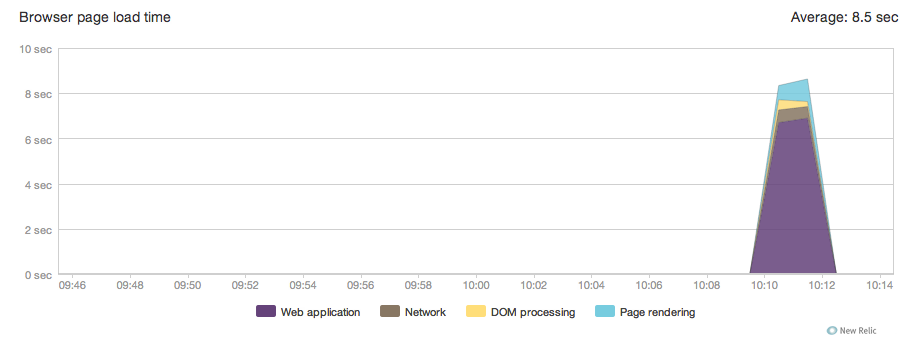Python OpenCV将平面YUV 4:2:0图像转换为RGB -- YUV数组格式
我正在尝试使用OpenCV版本4.1.0通过python将一个平面的YUV 4:2:0映像转换为RGB,并且很难理解如何格式化数组以传递给cvtColor函数。我将所有三个通道作为单独的数组,并试图将它们合并到cv2.cvtColor中使用。我正在使用cv2.cvtColor(yuv_array, cv2.COLOR_YUV420p2RGB)。我知道yuv_array应该是原始图像的1.5倍(这就是来自cvtColor使用cv2.COLOR_RGB2YUV_YV12的yuv数组的样子),我应该将UV组件放到yuv_array的下半部,Y通道放在数组的顶部。
我似乎不知道在这个数组的底部应该如何格式化U和V通道。我试过把它们交织在一起,然后把它们连在一起。用这两种方法,我试着把U放在第一位,然后是V,也是相反的。所有方法都会导致结果图像中的伪影。下面是我的代码和一个示例图像:
import os
import errno
import numpy as np
import cv2
fifo_names = ["/tmp/fifos/y_fifo", "/tmp/fifos/u_fifo", "/tmp/fifos/v_fifo"]
#teardown; delete fifos
import signal, sys
def cleanup_exit(signal, frame):
print ("cleaning up!")
for fifo in fifo_names:
os.remove(fifo)
sys.exit(0)
signal.signal(signal.SIGINT, cleanup_exit)
signal.signal(signal.SIGTERM, cleanup_exit)
#make fifos
for fifo in fifo_names:
try:
os.mkfifo(fifo);
except OSError as oe:
if oe.errno == errno.EEXIST:
os.remove(fifo)
os.mkfifo(fifo)
else:
raise()
#make individual np arrays to store Y,U, and V channels
#we know the image size beforehand -- 640x360 pixels
yuv_data = []
frame_size = []
fullsize = (360, 640)
halfsize = (180, 320)
for i in range(len(fifo_names)):
if (i == 0):
size = fullsize
else:
size = halfsize
yuv_data.append(np.empty(size, dtype=np.uint8));
frame_size.append(size)
#make array that holds all yuv data for display with cv2
all_yuv_data = np.empty((fullsize[0] + halfsize[0], fullsize[1]), dtype=np.uint8)
#continuously read yuv images from fifos
print("waiting for fifo to be written to...")
while True:
for i in range(len(fifo_names)):
fifo = fifo_names[i]
with open(fifo, 'rb') as f:
print("FIFO %s opened" % (fifo))
all_data = b''
while True:
data = f.read()
print("read from %s, len: %d" % (fifo,len(data)))
if len(data) == 0: #then the fifo has been closed
break
else:
all_data += data
yuv_data[i] = np.frombuffer(all_data, dtype=np.uint8).reshape(frame_size[i])
#stick all yuv data in one buffer, interleaving columns
all_yuv_data[0:fullsize[0],0:fullsize[1]] = yuv_data[0]
all_yuv_data[fullsize[0]:,0:fullsize[1]:2] = yuv_data[1]
all_yuv_data[fullsize[0]:,1:fullsize[1]:2] = yuv_data[2]
#show each yuv channel individually
cv2.imshow('y', yuv_data[0])
cv2.imshow('u', yuv_data[1])
cv2.imshow('v', yuv_data[2])
#convert yuv to rgb and display it
rgb = cv2.cvtColor(all_yuv_data, cv2.COLOR_YUV420p2RGB);
cv2.imshow('rgb', rgb)
cv2.waitKey(1)上面的代码试图将U和V信息按列插入.
我还尝试使用以下方法将U和V通道信息放置到all_yuv_data数组中:
#try back-to-back
all_yuv_data[0:fullsize[0],0:fullsize[1]] = yuv_data[0]
all_yuv_data[fullsize[0]:,0:halfsize[1]] = yuv_data[1]
all_yuv_data[fullsize[0]:,halfsize[1]:] = yuv_data[2]图像是用libav从另一个程序获得的视频帧。该框架为AV_PIX_FMT_YUV420P格式,被描述为“平面YUV 4:2:0,12 2x2,(每2x2Y样品1 Cr & Cb样品)”。
以下是以灰度显示的示例图像的yuv通道:
Y频道:

U频道:

V频道:

以及相应的RGB转换(这是使用上述交织方法的结果,在使用“背对背”方法时可以看到类似的工件):
带有工件的RGB图像:

我应该如何在all_yuv_data中放置u和v通道信息
由Mark在这一点之后编辑,
我相信预期的结果是:

回答 2
Stack Overflow用户
发布于 2020-03-17 22:16:24
如果YUV标准与OpenCV COLOR_YUV2BGR_I420转换公式相匹配,您可以将框架作为一个块读取,并将其重塑到高度*1.5行应用转换。
以下代码示例:
- 以YUV420格式构建输入,并将其写入内存流(而不是fifo)。
- 从流中读取帧并使用
COLOR_YUV2BGR_I420将其转换为BGR。 颜色不对..。 - 通过读取Y、U和V、调整U和V的大小并使用
COLOR_YCrCb2BGR转换重复此过程。 注意: OpenCV使用BGR颜色格式(而不是RGB)。
以下是代码:
import cv2
import numpy as np
import io
# Building the input:
###############################################################################
img = cv2.imread('GrandKingdom.jpg')
#yuv = cv2.cvtColor(img, cv2.COLOR_BGR2YUV)
#y, u, v = cv2.split(yuv)
# Convert BGR to YCrCb (YCrCb apply YCrCb JPEG (or YCC), "full range",
# where Y range is [0, 255], and U, V range is [0, 255] (this is the default JPEG format color space format).
yvu = cv2.cvtColor(img, cv2.COLOR_BGR2YCrCb)
y, v, u = cv2.split(yvu)
# Downsample U and V (apply 420 format).
u = cv2.resize(u, (u.shape[1]//2, u.shape[0]//2))
v = cv2.resize(v, (v.shape[1]//2, v.shape[0]//2))
# Open In-memory bytes streams (instead of using fifo)
f = io.BytesIO()
# Write Y, U and V to the "streams".
f.write(y.tobytes())
f.write(u.tobytes())
f.write(v.tobytes())
f.seek(0)
###############################################################################
# Read YUV420 (I420 planar format) and convert to BGR
###############################################################################
data = f.read(y.size*3//2) # Read one frame (number of bytes is width*height*1.5).
# Reshape data to numpy array with height*1.5 rows
yuv_data = np.frombuffer(data, np.uint8).reshape(y.shape[0]*3//2, y.shape[1])
# Convert YUV to BGR
bgr = cv2.cvtColor(yuv_data, cv2.COLOR_YUV2BGR_I420);
# How to How should I be placing the u and v channel information in all_yuv_data?
# -------------------------------------------------------------------------------
# Example: place the channels one after the other (for a single frame)
f.seek(0)
y0 = f.read(y.size)
u0 = f.read(y.size//4)
v0 = f.read(y.size//4)
yuv_data = y0 + u0 + v0
yuv_data = np.frombuffer(yuv_data, np.uint8).reshape(y.shape[0]*3//2, y.shape[1])
bgr = cv2.cvtColor(yuv_data, cv2.COLOR_YUV2BGR_I420);
###############################################################################
# Display result:
cv2.imshow("bgr incorrect colors", bgr)
###############################################################################
f.seek(0)
y = np.frombuffer(f.read(y.size), dtype=np.uint8).reshape((y.shape[0], y.shape[1])) # Read Y color channel and reshape to height x width numpy array
u = np.frombuffer(f.read(y.size//4), dtype=np.uint8).reshape((y.shape[0]//2, y.shape[1]//2)) # Read U color channel and reshape to height x width numpy array
v = np.frombuffer(f.read(y.size//4), dtype=np.uint8).reshape((y.shape[0]//2, y.shape[1]//2)) # Read V color channel and reshape to height x width numpy array
# Resize u and v color channels to be the same size as y
u = cv2.resize(u, (y.shape[1], y.shape[0]))
v = cv2.resize(v, (y.shape[1], y.shape[0]))
yvu = cv2.merge((y, v, u)) # Stack planes to 3D matrix (use Y,V,U ordering)
bgr = cv2.cvtColor(yvu, cv2.COLOR_YCrCb2BGR)
###############################################################################
# Display result:
cv2.imshow("bgr", bgr)
cv2.waitKey(0)
cv2.destroyAllWindows()结果:

Stack Overflow用户
发布于 2020-03-17 21:51:05
函数调用中存储在yuv_array底部的u和v通道信息:cv2.cvtColor(yuv_array, cv2.COLOR_YUV420p2RGB)
预期格式如下:
- 添加到yuv_array底部的额外行的上半部分填充u信息。行是交错的;u的第一行正好放在左侧槽中的y通道信息下面,第二行u放在
yuv_data同一行的右槽中,依此类推。 - V通道数据是相同的,但是对于添加到yuv_array的额外行的下半部分。
下面是连接代码,这些代码生成了MarkSetchnell在原始程序中发布的预期图像:
#place y channel into buffer
all_yuv_data[0:fullsize[0],0:fullsize[1]] = yuv_data[0]
#formatted as interleaved u rows on top, (half on left, half on right)
#and interleaved v rows on bottom
all_yuv_data[fullsize[0]:fullsize[0]+halfsize[0]//2, :] = yuv_data[1].reshape(-1, fullsize[1])
all_yuv_data[fullsize[0]+halfsize[0]//2:,:] = yuv_data[2].reshape(-1, fullsize[1])
#convert to rgb
rgb = cv2.cvtColor(all_yuv_data, cv2.COLOR_YUV420p2RGB);下面是all_yuv_data的灰度图像,以求清晰:

调用cv2.cvtColor(all_yuv_data, cv2.COLOR_YUV420p2RGB)后的结果:

https://stackoverflow.com/questions/60729170
复制相似问题

